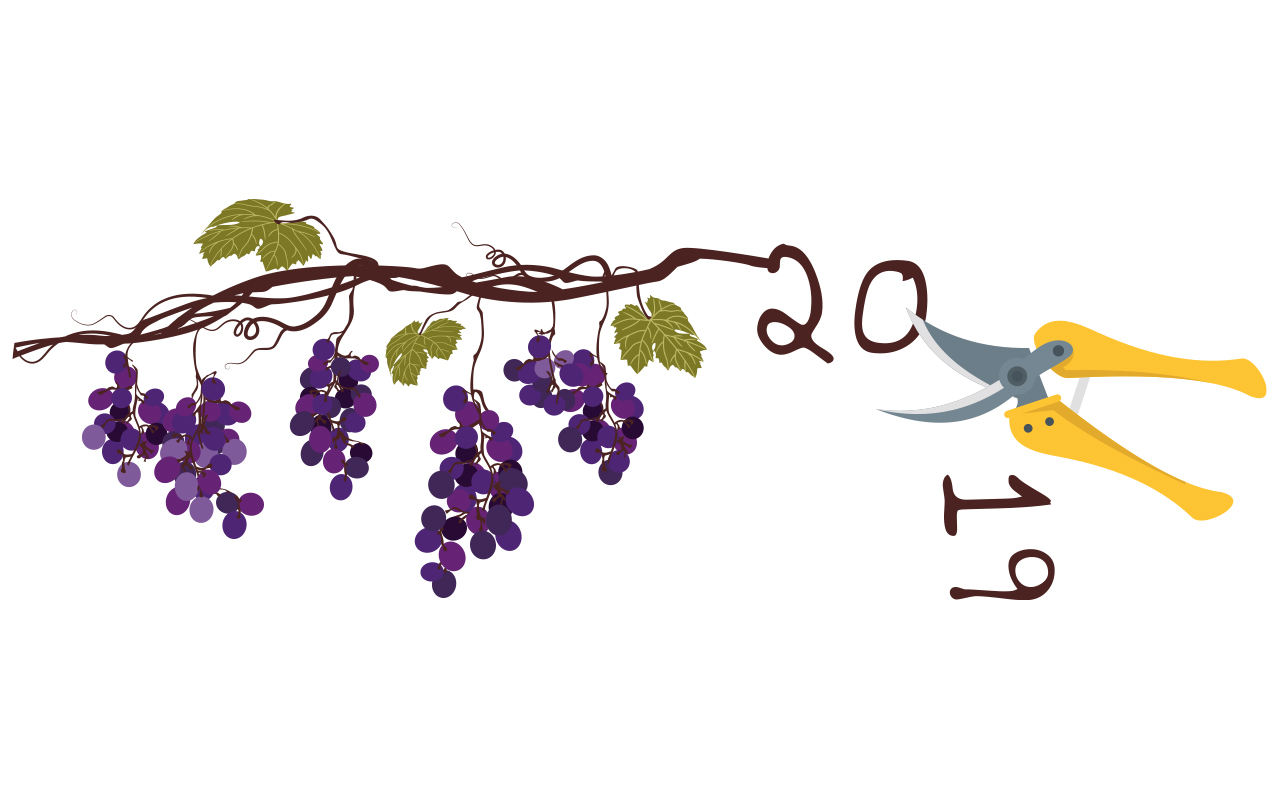In a dull autumn, vineyards appear golden brown; the wood is seasoned with potential for future fruitfulness and ready for pruning.
The year began with the ‘Brexit’ uncertainty; that plant protection product supply could be interrupted, but working with manufacturers, distributors like Agrii bought product ahead so that with few exceptions demand was met.
Vines were slow to break bud in the spring, which contributed to high levels of bud damage from eriophyid mites on some sites. These conditions allowed a longer period for feeding damage to occur, and also required a longer period of protection. Resultant damage in unprotected vines was immediate; causing bud death, Restricted Shoot Growth (RSG) and damaged flowers; prolonged through the season in a weakened canopy, and to the end in early loss of leaf colour and bronzing. At the start of next season sequential cover with sulphur will be important for affected vineyards and an advised precaution for most.
May temperatures more suitable for vines, improved crop development and early indications of inflorescence numbers and size were promising, assisted by ideal conditions for formation in 2018. In cool climate production, every aspect of site selection and culture to favour temperature development is significant. The prolonged period of cooler conditions pre-flowering in June before soils warmed and vines pulled new reserves were damaging. Combined with nearly constant wind (2019 was typically windy) canopy development was retarded, leaf subtly thinner, prone to damage, and nutrition to developing flowers compromised. Whilst flowering conditions were generally good, set was indifferent; most sites experiencing cluster senescence, cap retention and fruitlet shatter to a lesser or greater degree. Such circumstances highlight the potential benefit of pre-post harvest nutrition and in the period before flowering when foliar applied nutrition and bio-stimulants including seaweeds can make a difference.
Initially high inflorescence numbers made up for some of the damage, as did a reasonable summer, and the crop developed well. Prolonged high temperatures over the August Bank Holiday inflicted significant berry scorch but which for the most part shrivelled up without causing early rots at veraison. The practice of leaf removal around the fruit is important in our maritime climate. As sure as night follows day poor ventilation and spray cover will induce disease where conducive micro-climates prevail. Subject to sufficient canopy development, leaf removal is underway as early as fruit set. A balanced approach should be taken to manage this, with available labour and to acclimatise the fruit to strong sunlight, and it might be argued this should begin on the west/south side first when crop stage is least susceptible.
It is not uncommon for Botrytis to begin ‘pre-veraison’ in individual cluster berries with ‘veraison’ characteristics and that are damaged, adjacent to botrytic debris and inadequately sprayed pre-closure. Effective cover at veraison can be, and was, effective in halting further spread this season. Undoubtedly helpful bunch architecture – sometimes a longer rachis, larger bunches with fewer set berries from earlier loss at flowering, together with slower maturation and slow sugar development prevented significant development this year in otherwise highly susceptible varieties. The high rainfall and delayed harvest inevitably caused fruit splitting in thinner-skinned white varieties Ortega and Bacchus and ongoing in pinot varieties including Gris, compromising late picked pieces to losses. More effective late-applied botrytiscides are in the pipeline including those being trialled by Agrii at NIAB-EMR and will be a significant development in post veraison control.
For many of the reasons given above, SWD was not a problem. Susceptibility of the earlier ripening red and thinner-skinned varieties, from fruit splitting at the pedicel and the earlier sugar development experienced in 2017 was not a feature this season.
Crop protection challenges ahead for 2020 include the likely loss of mancozeb and co-formulated products (Valbon, Roxam and Electis) and also dimethomorph in Percos. Agrii will continue to work with industry partners to develop new products most notably for downy mildew, control of phomopsis; also bio-rationals for powdery mildew and botrytis for both conventional and organic production. Encouragingly, supportive manufacturers have a strong pipeline and there is every indication we will benefit in the not too distant future.
We would like to wish you all a very Happy Christmas and a healthy and prosperous New Year.




